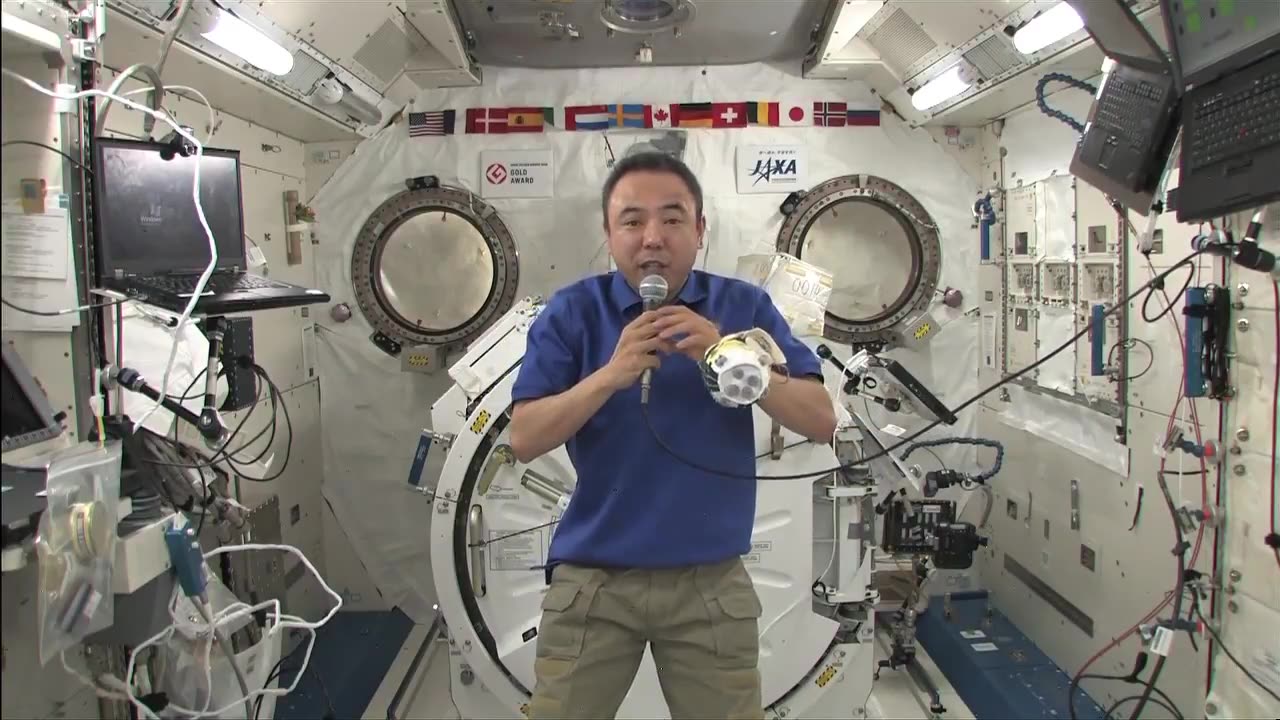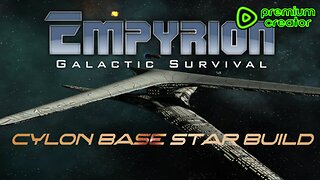Premium Only Content

Station Resident Talks with Pacific Students
Title: "10 Essential Tips for Effective SEO in 2023"
Introduction (Approximately 50 words): In the ever-evolving landscape of search engine optimization (SEO), it is crucial for businesses and website owners to stay up-to-date with the latest strategies and techniques. This article presents ten essential tips to help you navigate the SEO landscape in 2023 and improve your website's visibility and organic rankings.
1. Optimize for Voice Search (Approximately 50 words): As voice assistants like Siri and Alexa continue to gain popularity, optimizing your website for voice search has become essential. Focus on long-tail keywords, natural language, and conversational phrases that mirror how people speak. By incorporating voice search optimization, you can capture a larger audience and improve your chances of ranking in voice search results.
2. Mobile-Friendly Design (Approximately 50 words): Mobile devices have overtaken desktops as the primary means of accessing the internet. Therefore, having a mobile-friendly website is not just important for user experience but also for SEO. Ensure your website is responsive and loads quickly on mobile devices, as this directly impacts your search engine rankings.
3. High-Quality, Relevant Content (Approximately 50 words): Content is still king in the world of SEO, and high-quality, relevant content is crucial for ranking well in search results. Focus on creating informative, engaging, and unique content that provides value to your target audience. Incorporate relevant keywords naturally and optimize your content for featured snippets to increase visibility.
4. User Experience and Core Web Vitals (Approximately 50 words): User experience is a significant ranking factor, and Google's Core Web Vitals have become even more important in 2023. Pay attention to metrics such as page load speed, mobile-friendliness, and interactivity. Optimize your website's performance to enhance user experience and improve your chances of ranking higher in search results.
5. Optimize for Featured Snippets (Approximately 50 words): Featured snippets are an effective way to improve your website's visibility in search results. Structure your content to answer commonly asked questions and provide concise, well-organized information. Use header tags, bullet points, and schema markup to increase the chances of your content being featured as a snippet.
6. Secure Website (Approximately 50 words): Website security is not just vital for protecting user information but also for SEO. Google prioritizes secure websites and penalizes those that are not encrypted with SSL certificates. Ensure that your website has HTTPS in its URL to establish trust with users and search engines, boosting your SEO efforts.
7. Local SEO (Approximately 50 words): For businesses targeting a specific geographical location, local SEO is crucial. Optimize your website for local keywords, create a Google My Business profile, and encourage positive reviews from customers. These steps will help you rank higher in local search results and attract customers in your area.
8. Optimize for Visual Search (Approximately 50 words): Visual search is gaining popularity, thanks to platforms like Pinterest and Google Lens. To optimize for visual search, use descriptive alt tags for images, optimize image file sizes for faster loading, and ensure images are relevant to your content. Visual search optimization can provide an additional avenue for attracting organic traffic.
9. Build High-Quality Backlinks (Approximately 50 words): Backlinks continue to be a crucial ranking factor in SEO. Focus on building high-quality backlinks from authoritative and relevant websites. Invest in guest blogging, influencer collaborations, and content partnerships to earn quality backlinks that can significantly improve your website's visibility and search rankings.
10. Monitor and Analyze Performance (Approximately 50 words): Regularly monitor and analyze your website's performance using tools like Google Analytics and Google Search Console. Keep track of important metrics such as
chronicles solar activity from Aug. 12 to Dec. 22, 2022, as captured by NASA’s Solar Dynamics Observatory (SDO). From its orbit in space around Earth, SDO has steadily imaged the Sun in 4K x 4K resolution for nearly 13 years. This information has enabled countless new discoveries about the workings of our closest star and how it influences the solar system. With a triad of instruments, SDO captures an image of the Sun every 0.75 seconds. The Atmospheric Imaging Assembly (AIA) instrument alone captures images every 12 seconds at 10 different wavelengths of light. This 133-day time lapse showcases photos taken at a wavelength of 17.1 nanometers, which is an extreme-ultraviolet wavelength that shows the Sun’s outermost atmospheric layer: the corona. Compiling images taken 108 seconds apart, the movie condenses 133 days, or about four months, of solar observations into 59 minutes. The video shows bright active regions passing across the face of the Sun as it rotates. The Sun rotates approximately once every 27 days. The loops extending above the bright regions are magnetic fields that have trapped hot, glowing plasma. These bright regions are also the source of solar flares, which appear as bright flashes as magnetic fields snap together in a process called magnetic reconnection. While SDO has kept an unblinking eye pointed toward the Sun, there have been a few moments it missed. Some of the dark frames in the video are caused by Earth or the Moon eclipsing SDO as they pass between the spacecraft and the Sun. Other blackouts are caused by instrumentation being down or data errors. SDO transmits 1.4 terabytes of data to the ground every day. The images where the Sun is off-center were observed when SDO was calibrating its instruments. SDO and other NASA missions will continue to watch our Sun in the years to come, providing further insights about our place in space and information to keep our astronauts and assets safe. The music is a continuous mix from Lars Leonhard’s “Geometric Shapes” album, courtesy of the artist. Credit: NASA's Goddard Space Flight Center Scott Wiessinger (PAO): Lead Producer Tom Bridgman (SVS): Lead Visualizer Scott Wiessinger (PAO): Editor This video can be freely shared and downloaded at https://svs.gsfc.nasa.gov/14263. While the video in its entirety can be shared without permission, the music and some individual imagery may have been obtained through permission and may not be excised or remixed in other products. Specific details on such imagery may be found here: https://svs.gsfc.nasa.gov/14263. For more information on NASA’s media guidelines, visit https://nasa.gov/multimedia/guidelines. Video Description: On the left side of the frame is the full circle of the Sun. It appears in a golden yellow color, but splotchy and with thin yellow wisps extending from the surface. Some areas are very bright and others almost black. The whole Sun rotates steadily, with one full rotation taking 12 minutes in this time lapse. There are usually only a few bright regions visible at a time and they shift and flash like small fires. From these regions there are wispy loops reaching up above the surface that rapidly change shape and size. On the right side of the frame are two white-outlined squares with enlargements of interesting regions of the Sun. If you liked this video, subscribe to the NASA Goddard YouTube channel: https://www.youtube.com/NASAGoddard Follow NASA’s Goddard Space Flight Center · Instagram http://www.instagram.com/nasagoddard · Twitter http://twitter.com/NASAGoddard · Twitter http://twitter.com/NASAGoddardPix · Facebook: http://www.facebook.com/NASAGoddard · Flickr http://www.flickr.com/photos/gsfc
NASA's mission is to pioneer the future in space exploration, scientific discovery and aeronautics research. To do that, we have worked around the world -- and off it -- for more than 50 years, searching for answers to fundamental questions about our place in the universe. We're exploring space and discovering Earth. Join us for this exciting and important journey.
#NASA
#Space
#Astronomy
#Science
#SpaceExploration
#RocketLaunch
#Cosmos
#Astrophysics
#SpaceMissions
#PlanetaryScience
#SpaceTech
#SpaceDiscovery
#Exoplanets
#InternationalSpaceStation
#Stargazing
#Galaxies
#Universe
#SpaceResearch
#SolarSystem
#BlackHoles
#MoonLanding
#MarsExploration
#Satellites
#StarFormation
#SpacePhotography
#AlienLife
#SpaceInnovation
#RocketScience
#CelestialBodies
#Interstellar
#OrbitalScience
#SpaceTechnology
#SpaceWeather
#NASAImages
#CosmicWonders
#AstronomyFacts
#ExploringSpace
#BeyondEarth
#GalacticExploration
#DeepSpace
#SpaceEducation
#AstronomicalDiscoveries
#CosmicJourney
#Astrobiology
#MeteorShowers
#SpaceX
#Astrochemistry
#HubbleTelescope
#SpaceAdventures
#CosmicWonders
#Space
#NASA
#Astronomy
#Science
#SpaceExploration
#RocketLaunch
#Astrophysics
#SpaceMissions
#PlanetaryScience
#SpaceTech
#Galaxies
#Stargazing
#Universe
#Cosmos
#BlackHoles
#SolarSystem
#MoonLanding
#MarsExploration
#InternationalSpaceStation
#Satellites
#AlienLife
#SpacePhotography
#StarFormation
#SpaceResearch
#OrbitalScience
#SpaceInnovation
#CelestialBodies
#Interstellar
#Astrobiology
#MeteorShowers
#SpaceX
#HubbleTelescope
#SpaceAdventures
#AstronomyFacts
#DeepSpace
#Extraterrestrial
#GalacticExploration
#SpaceTravel
#AstronomyClub
#CosmicWonders
#ExploringSpace
#SpaceEducation
#AstronomyPhotos
#BeyondEarth
#CosmicJourney
#SpaceObservation
#Astrochemistry
#SpaceWeather
#CosmicCuriosity
#SpaceCommunity
The National Aeronautics and Space Administration is America’s civil space program and the global leader in space exploration. The agency has a diverse workforce of just under 18,000 civil servants, and works with many more U.S. contractors, academia, and international and commercial partners to explore, discover, and expand knowledge for the benefit of humanity. With an annual budget of $23.2 billion in Fiscal Year 2021, which is less than 0.5% of the overall U.S. federal budget, NASA supports more than 312,000 jobs across the United States, generating more than $64.3 billion in total economic output (Fiscal Year 2019).
At its 20 centers and facilities across the country – and the only National Laboratory in space – NASA studies Earth, including its climate, our Sun, and our solar system and beyond. We conduct research, testing, and development to advance aeronautics, including electric propulsion and supersonic flight. We develop and fund space technologies that will enable future exploration and benefit life on Earth.
NASA also leads a Moon to Mars exploration approach, which includes working with U.S. industry, international partners, and academia to develop new technology, and send science research and soon humans to explore the Moon on Artemis missions that will help prepare for human exploration of the Red Planet. In addition to those major missions, the agency shares what it learns so that its information can make life better for people worldwide. For example, companies use NASA discoveries and technologies to create new products for the public. To ensure future success for the agency and the nation, NASA also supports education efforts in STEM with an emphasis on increasing diversity in our future workforce.
The term "astronaut" derives from the Greek words meaning "space sailor," and refers to all who have been launched as crew members aboard NASA spacecraft bound for orbit and beyond. The term "astronaut" has been maintained as the title for those selected to join the NASA corps of astronauts who make "space sailing" their career profession.
Active Astronauts: Eligible for flight assignment.
Management Astronauts: Currently employed at NASA but are no longer eligible for flight assignment.
Astronaut Candidates: Selected by NASA as candidates for the NASA astronaut corps.
Former Astronauts: Astronauts are those who have left NASA, including those who are deceased.
International Astronauts: Astronauts from international space agencies who have trained or served with NASA Astronauts.
Greetings! Thank you for your interest in a NASA exhibit and artifact. Due to the high demand, unfortunately at this time, NASA is unable to accommodate requests for exhibits and artifacts. NASA is taking steps to improve our process for borrowing artifacts and exhibits in order to better serve the numerous requests received. In the meantime, we encourage you to use NASA's many online resources. Please continue to follow our website for updates.
Speakers Bureau: https://www.nasa.gov/about/speakers/nasa-speakers-howto.html
Solar System Ambassadors: https://solarsystem.nasa.gov/solar-system-ambassadors/events/
NASA @ Home: https://www.nasa.gov/specials/nasaathome/index.html
Astronaut Appearances: https://astronautappearances.nasa.gov/
STEM Engagement: https://www.nasa.gov/stem
Virtual Guest Program NASA Virtual Guest Ops
"Asteroid City" cast asking NASA about the OSIRIS-REx asteroid mission. OSIRIS-REx is a NASA spacecraft mission designed to study and collect samples from the near-Earth asteroid Bennu. However.
As of my last update in September 2021, NASA has been studying the possibility of mining asteroids for resources, particularly valuable minerals and metals that could be used for space exploration and even back on Earth. This concept is often referred to as asteroid mining.
One of the key missions related to asteroid mining was the OSIRIS-REx mission, which stands for Origins, Spectral Interpretation, Resource Identification, Security, Regolith Explorer. OSIRIS-REx was designed to study the near-Earth asteroid Bennu and collect a sample from its surface. While the primary goal of OSIRIS-REx was to better understand the origins of our solar system and the role of asteroids in that process, the mission also carried implications for future asteroid mining.
Asteroids are rich in various resources, including precious metals, water ice, and other minerals. These resources could potentially be used to support future space exploration missions by providing raw materials for spacecraft construction, fuel production, and life support systems.
NASA's interest in asteroid mining is part of a broader effort to develop sustainable space exploration and utilization strategies. The agency, along with private companies in the space industry, has been exploring the technical, economic, and ethical aspects of mining asteroids.
Since my information is not up-to-date, I recommend checking the latest news and updates from NASA or reputable space-related sources for any recent developments in asteroid mining or related missions.
-
 28:35
28:35
marcushouse
22 hours ago $3.43 earnedSpaceX’s Wild New Plan to Launch Starship Fast… and NASA’s Booster Test Ended With a BOOM!
32.6K6 -
 LIVE
LIVE
Whiz
15 hours agoThe Finals World Tour is Intense!
65 watching -
 LIVE
LIVE
Jokeuhl Gaming and Chat
6 hours agoEmpyrion on Dorkitos - Rebuilding After the Crash
103 watching -
 LIVE
LIVE
Lofi Girl
2 years agolofi hip hop radio 📚 - beats to relax/study to
811 watching -
 8:01
8:01
MattMorseTV
1 day ago $12.64 earnedNYC Democrat is in HOT WATER.
64.7K115 -
 7:24
7:24
Warren Smith - Secret Scholar Society
1 day ago1 Guy Causes Entire Mob of Protesters to Implode & Get Arrested
88.6K51 -
 31:24
31:24
The Why Files
3 days agoSynchronicities | The Science Behind Your Meaningful Coincidences (STRIPPED)
63.8K45 -
 2:07:34
2:07:34
FreshandFit
10 hours agoWhy You Are Unhappy Dating!
71.8K21 -
 1:21:38
1:21:38
Badlands Media
1 day agoDevolution Power Hour Ep. 367
130K41 -
 2:28:09
2:28:09
Tundra Tactical
9 hours ago $10.12 earned🔥 NFA Hypocrisy EXPOSED: the Senate Just Screwed Gun Owners (Again) | Tundra Nation Live Roast 🔥
53.3K5